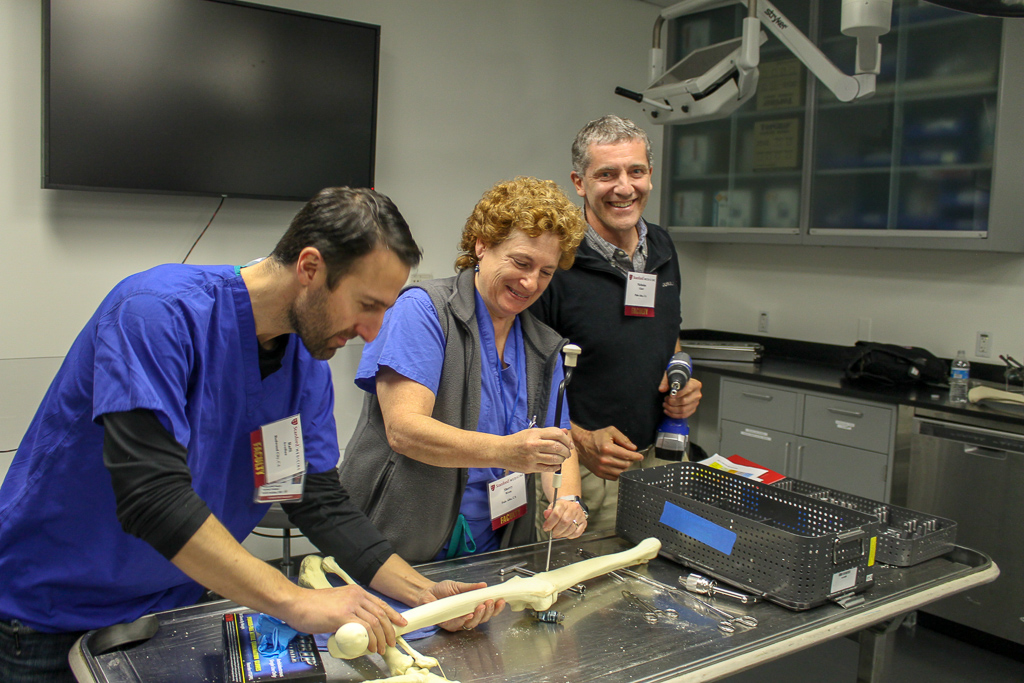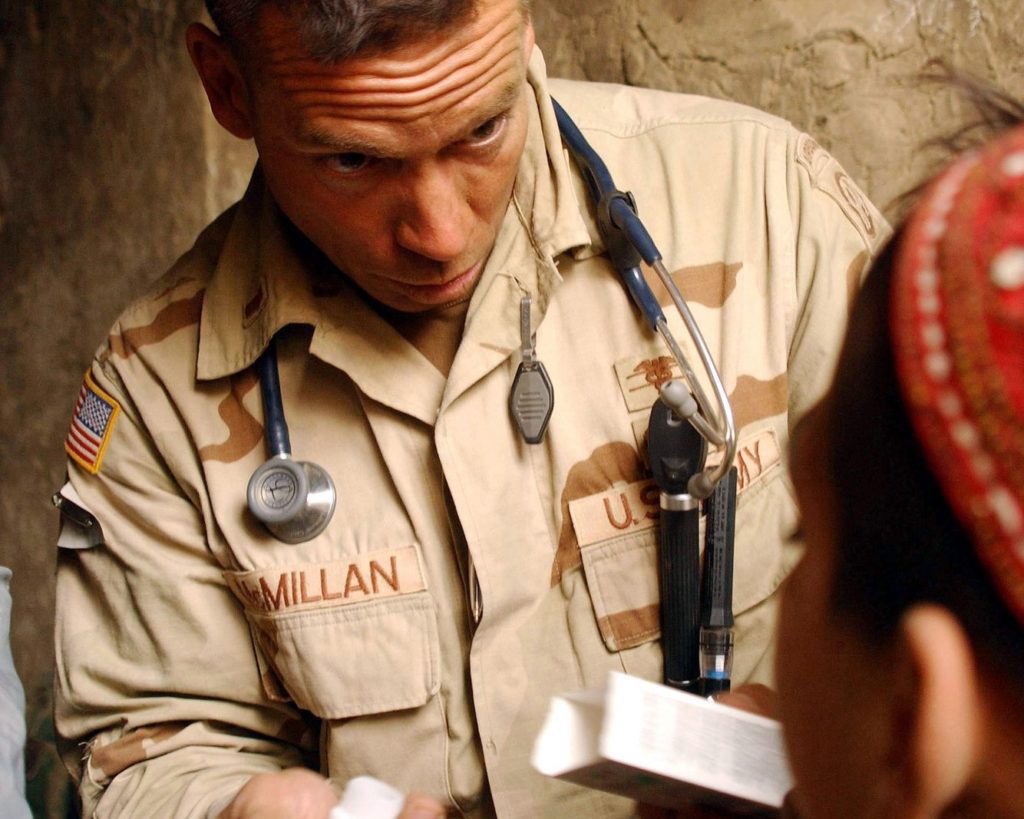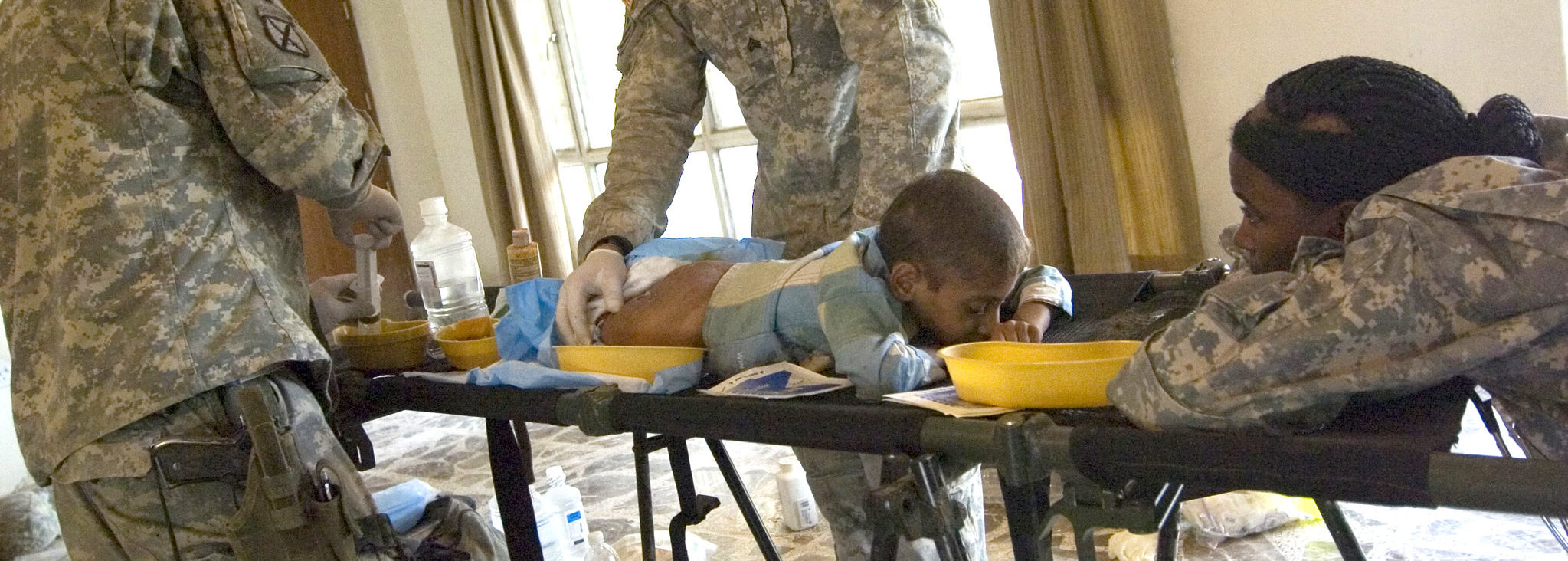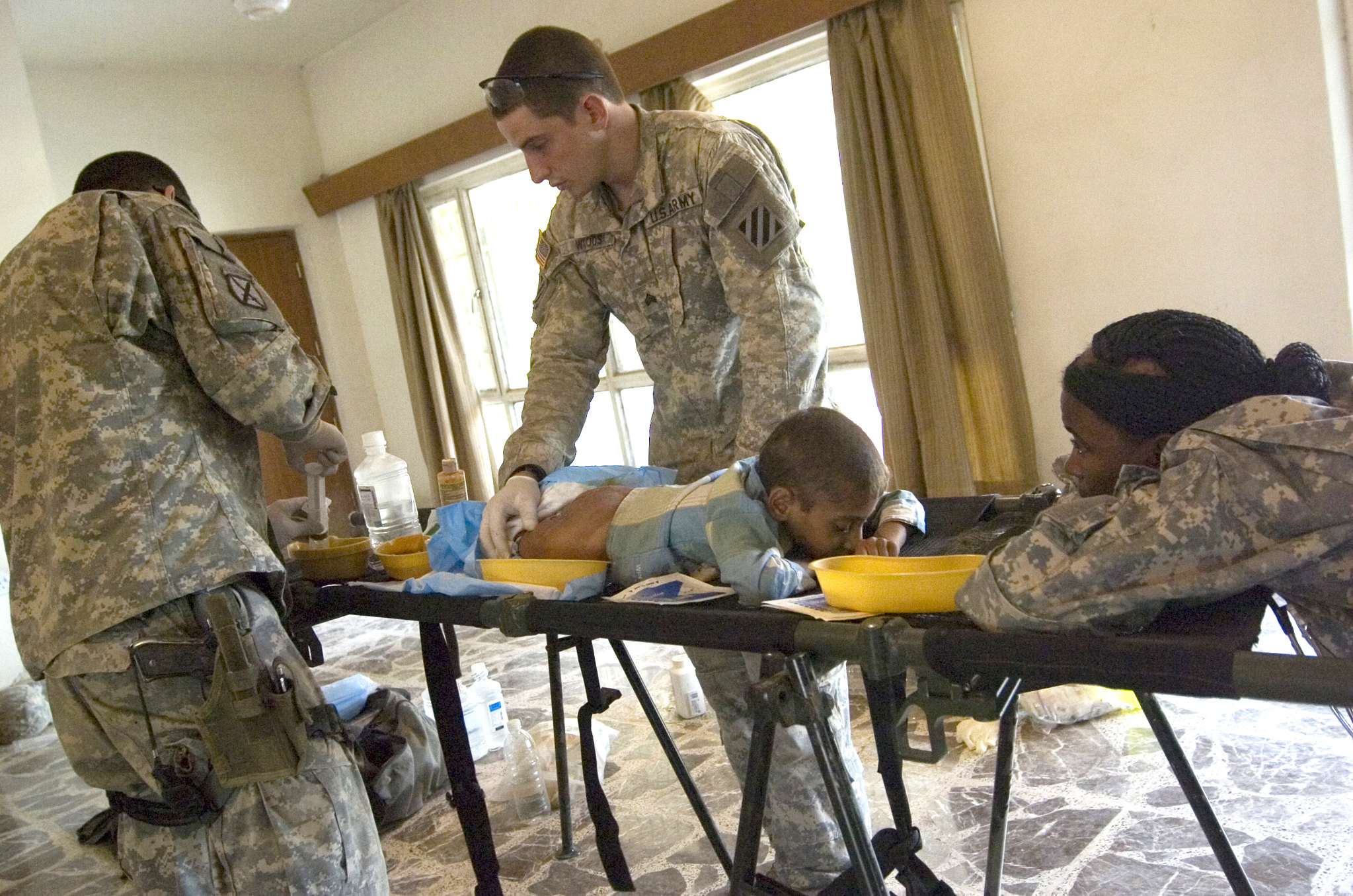Published: 05/23/2022
Sherry Wren, MD, FACS, FCS(ECSA) speaks about how insights from a review of the U.S. military’s humanitarian medical care in Iraq and Afghanistan can inform better care to injured civilians in conflicts around the globe
By Jamie Hansen, Communications Manager, Stanford Center for Innovation in Global Health
During war, civilian health suffers immensely. Not only do everyday citizens tend to die at higher rates than those doing the fighting — they often suffer from a loss of medical care and infrastructure that leaves chronic or life-threatening conditions untreated.
Dr. Sherry Wren, MD, FACS, FCS(ECSA) is professor of surgery at Stanford Hospital and Director of Global Surgery for the Center for Innovation in Global Health who has led international research projects to understand and improve how medical care is delivered during conflicts.

Wren and her colleagues recently set out to study civilian injuries and treatment in war zones, with the hope of gaining a better understanding of the training, logistics, and resources needed to support and empower agencies providing life-saving humanitarian medical care.
She is now the senior author on a publication in the Annals of Surgery currently pending editorial review: “Characterization of humanitarian work done by the US military in Afghanistan and Iraq for injured civilians.” This publication outlines the most extensive description to date of civilian injuries in a conflict zone. Wren believes the study could contribute significantly to improved humanitarian response and coordination of medical care during times of war.
In light of current highly visible conflicts targeting civilians, we spoke with Dr. Wren about war’s unique threats to civilians, and the resources needed to save lives.
What does it mean to provide humanitarian surgery during war, and how does war require a different type of response than other crises?
When people talk about “humanitarian” surgery, they often mix natural disasters with war, but disasters usually unfold in a very different way than modern conflicts.
In the buildup to conflict, one of the first things to happen is the country’s health systems start to disintegrate. Those people with means, including health care workers, might try to leave the country if they can. Then, as civil unrest sets in, you begin to get populations on the move. People get uprooted and become either internally displaced or refugees. Typically these populations on the move don’t have access to care. On top of that, you have two things happening: First. you have direct injuries as a result of the conflict and you have all of the basic surgical needs of a population that now have no means of being addressed, such as fractures, appendicitis, obstructed labor, and postpartum hemorrhage. Without access to care, these unmet needs can become deadly.
Your recent research is an unprecedented exploration of how the U.S. military cares for injured civilians during war. What prompted this research?
Conflict has changed in many ways in recent decades, unfortunately, including the frequency of war and the impact on civilians. We have seen this in Syria, Yemen, and now, quite visibly, in Ukraine. Several years ago, I received a Stanford Global Health Seed Grant to develop consensus guidelines about what humanitarian response in a modern conflict zone should be. Thanks to this grant, in 2019 we published a consensus framework that addresses the security and medical requirements as well as ethical and legal principles that guide humanitarian action.
However, one of the biggest obstacles to implementing this framework is that nobody really has a very good understanding of the full epidemiology of surgical needs in a conflict zone.
The classic humanitarian actors that respond in this space are Doctors Without Borders / Medecins Sans Frontieres (MSF) and the International Committee of the Red Cross (ICRC), local NGOs and health care providers, and the military. There is a basic lack of consistency about how data is kept and tracked across agencies. When we reviewed the literature, less than a quarter of reports presented data on injury severity, resource utilization, and outcomes other than mortality — thus, there’s been an inability to look at the epidemiology of trauma and needs in war zones.
This most recent project sought to address that by using one of the richest data sources we could find — the U.S. Department of Defense’s Trauma Registry — to better understand the epidemiology of trauma and resources needed to take care of people in a conflict zone.

How did you decide to focus your study on the efforts of the U.S. military?
During the U.S. military’s engagements in Afghanistan and Iraq over the last two decades, humanitarian care of the civilian population has been a large part of the military mission. Medical rules of engagement, outlined by International Humanitarian law and defined by mission commanders, include the care for civilians injured in war. Commanders can expand on these rules to extend care for civilians to injuries and illness not sustained due to the war. The military maintains an extensive trauma database of all patients who have received care in a military treatment facility for trauma, and all the resources used to treat that patient.
In Iraq and Afghanistan, in addition to care to civilians directly injured from US actions there was an expansion of humanitarian care beyond what was required under International Humanitarian Law. Some of this care was provided because there was capacity at the facility and surgical teams wanted to engage with the local community. Another incentive was care provided as part of a “hearts and minds” campaign, a controversial concept in the field of humanitarian surgery. The idea is, “If we help communities by building schools or taking care of their loved ones, then they’re more likely to help us.” For humanitarian organizations such as MSF and ICRC this is not something that should be done because it takes away neutrality and impartiality.
We set out to use this database to look at the care of the injured by the military to civilians from 2005 to 2019: How many procedures were done? How many operations were done? What types of operations and procedures and what resources were required? How much blood was given? And we compared them to a group called the non-NATO coalition forces — people in the Iraqi and Afghan military and police who, like civilians, were at risk for significant injuries and did not have the protection of body armor and armored vehicles that the NATO forces had.
What were some of the most compelling findings?
Our research underscored that contemporary trauma care is resource-intense, requiring significant operating room and procedure supplies, blood, beds, and staff. The U.S. military is very well-resourced compared to many other organizations working in this space. This data will be helpful for planning future missions and understanding the resources and surgical needs.
“The data also underscore the disproportionate toll war takes on children, women, and the elderly. “
Dr. Sherry Wren
The data also underscore the disproportionate toll war takes on children, women, and the elderly. These are special populations that always get caught up in the modern conflict. We saw a greater percent of female, youth, and elderly treated in the civilian population than the Non-NATO coalition forces, and we saw a higher percent of civilians die overall than in the Non-NATO coalition forces. Children, for instance, are unfortunately much more likely to suffer and die from severe burns than the overall injured civilian population or Non-NATO coalition forces.
This is difficult work. Was there anything in your findings that gave you hope?
Most importantly, we found that the military provided an equivalent level of care to injured civilians. For instance, the same percent of both civilian and Non-NATO coalition populations received blood transfusions when needed. There really were remarkable similarities in the care that got delivered.
From a humanitarian standpoint, you hope your country does the right thing and follows the rules. It’s nice to be able to say, “Yes, we did.”
“From a humanitarian standpoint, you hope your country does the right thing and follows the rules. It’s nice to be able to say, ‘Yes, we did.'”
Dr. Sherry Wren
After all, what kind of doctor could ever say, “I’m not going to care for ‘that one’ because they’re not one of ours?” It reinforces my belief in humanity and our medical teams. Seeing the humanitarian care provided by the U.S. military makes me proud to be an American and proud to be a surgeon.
*Wren’s co-authors include Jennifer M Gurney MD, Victoria Graf, Amanda M Staudt PhD, Jennifer D Trevino MBA, Christopher A VanFosson PhD., RN, and Hannah Wild MD.

